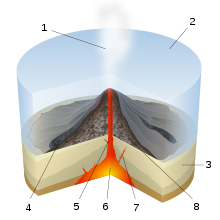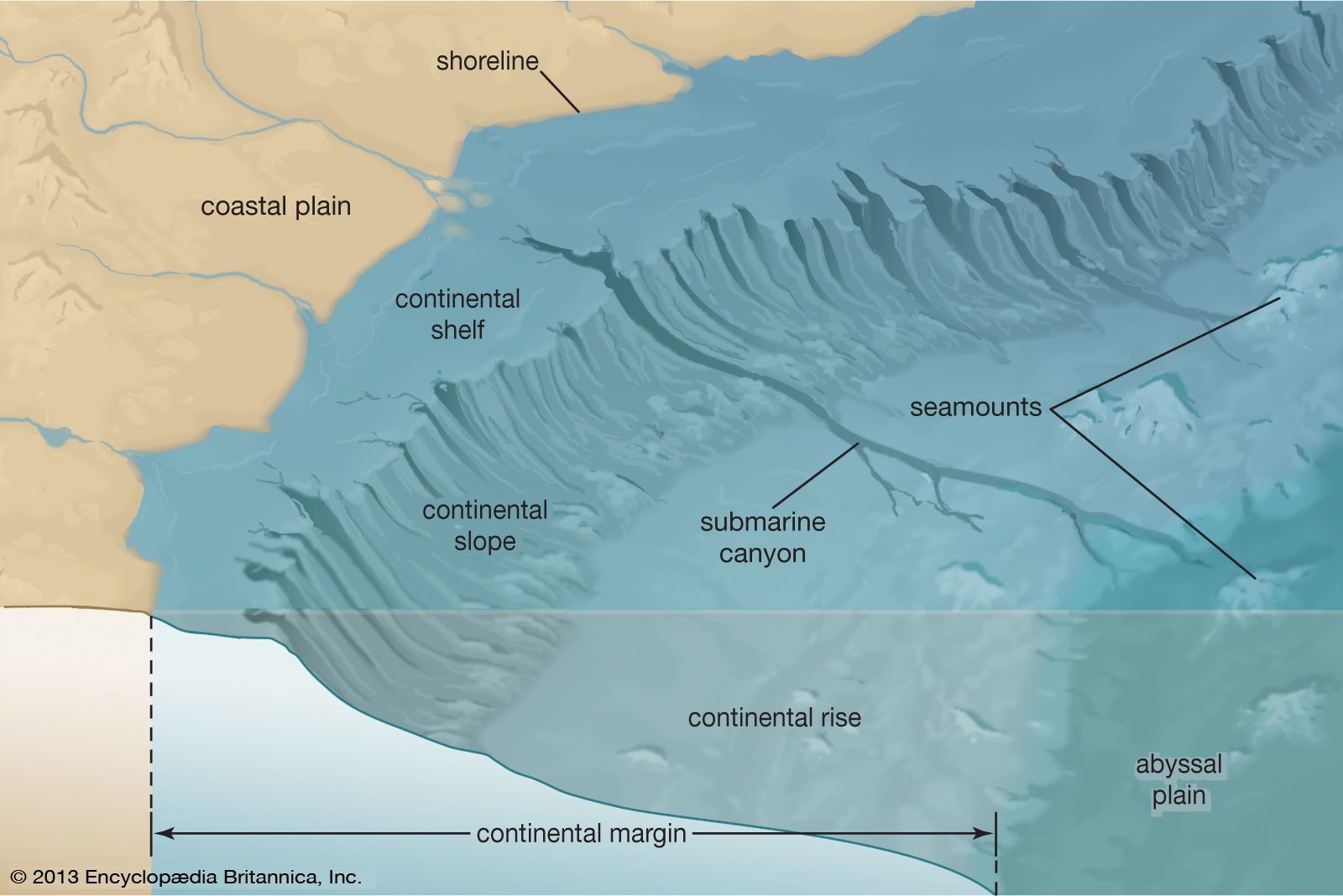Description

Disclaimer: Copyright infringement not intended.
Context
- A 2011 census had already mapped 24,000 seamounts across the world’s oceans.
- But now, in an astonishing discovery, scientists have reported finding 19,325 new seamounts after poring through new high-resolution data.
Sea Mounts
About
- A seamount is an underwater mountain.
- Seamounts are typically formed from extinct volcanoes that rise abruptly and are usually found rising from the seafloor to 1,000–4,000 m (3,300–13,100 ft) in height.
A seamount is technically defined as an isolated rise in elevation of 1,000 m (3,281 ft) or more from the surrounding seafloor, and with a limited summit area, of conical form.
Formation
- They are formed through volcanic activity and scientists recognise them as hotspots for marine life.
- Like volcanoes on land, seamounts can be active, extinct or dormant volcanoes.

Area of Formation
- Most seamounts are formed near mid-ocean ridges, where the earth’s tectonic plates are moving apart, allowing molten rock to rise to the seafloor.
- The planet’s two most-studied mid-ocean ridges are the Mid-Atlantic Ridge and the East Pacific Rise.
- Some seamounts have also been found near intraplate hotspots – regions of heavy volcanic activity within a plate – and oceanic island chains with volcanic and seismic activity called island arcs.
Role and Importance of Seamounts
Information on evolution of Tectonic Plates:
- Because seamounts are formed when molten rock comes up from below the tectonic plates, they provide information about the mantle’s composition and about how tectonic plates evolve.
Water Circulation:
- Oceanographers also study seamounts to understand their influence on how water circulates and absorbs heat and carbon dioxide.
Home to diverse biological communities:
- Seamounts are home to diverse biological communities. They are good places for life because they can cause localised ocean upwelling – the process by which nutrient-rich water from deep within the ocean moves up to the surface.
Insights on Evolution of Earth:
- Forged and altered by volcanic and tectonic processes that are intimately linked to the deep earth. They give us insights into the forces that have shaped the face of our planet.
Mineral Harvesting:
- They are also being targeted by mining companies that hope to harvest the minerals that often collect around seamounts as a result of hydrothermal activity.
Hotspot of marine life:
- Seamounts also attract an abundance of marine life and are productive fishing grounds more than 80 commercial species worldwide.

Mapping of Seamounts
- Surveyors map seamounts using one of two modes – echo sounders or multibeam sonar on ships for topographic mapping or using satellite altimetry for gravity-field mapping.
- Research vessels with multibeam sonar mapping produce hi-res maps but these maps are often incomplete: the places where the vessels don’t go become blindspots.
- In satellite altimetry, a satellite uses radar to gauge the shape of the seafloor by measuring the time taken for each pulse to bounce off the ground and return. The resulting maps are low-res but have much better coverage.
- SARAL, a satellite that India and France developed together for oceanographic studies, made a significant contribution by further reducing radar noise and enabling the expansion of the seamount catalogue.
Isolated as well as in groups
- Seamounts are often found in groupings or submerged archipelagos, a classic example being the Emperor Seamounts, an extension of the Hawaiian Islands.
- Isolated seamounts and those without clear volcanic origins are less common; examples include Bollons Seamount, Eratosthenes Seamount, Axial Seamount and Gorringe Ridge.
Biological Richness
- The biological richness of seamount habitats results from the shape of these undersea mountains.
- Due to the steep slopes of seamounts, nutrients are carried upwards from the depths of the oceans toward the sunlit surface, providing food for creatures ranging from corals to fish to crustaceans.
Area
- Seamounts encompass about 8 million square kilometers of the Earth's surface.
- That's larger than deserts, tundra, or any other single land-based global habitat on the planet.

|
Sea Mount
|
Guyot
|
|
1. Sea Mounts are the mountains on the sea floor.
2. They are above 1000 metres in height.
3. They have conical summits.
4. They are of volcanic origin.
5. Some of them attain a height of 3000 metres.
|
1. Guyots are hills found on the sea floor.
2. They are also above 1000 metres in height.
3. They have flat tops.
4. They are also of volcanic origin.
5. An ordinary guyot has a diameter of 20–25 km.
|
New Research in place
- Researchers have been investigating the interaction between seamounts and ocean currents and the role that this may play in creating isolated biological “hotspots” that act as critical locations for new species formation, endemism, and biodiversity.
- Scientists are also investigating whether seamounts act as oases or “stepping stones” for life amid barren expanses of seafloor.
- Other research is looking into questions about how seamount populations change in response to climate-induced shifts in ocean circulation and whether habitats disturbed by human activity can recover.
Significance
- Such knowledge is critical to policymakers, so that they can make effective decisions about managing and protecting this diverse and valuable resource throughout our deep ocean.
|
PRACTICE QUESTION
Q. Which of the following statements are correct with reference to Seamounts?
a) A seamount is technically defined as an isolated rise in elevation of 1,000 m (3,281 ft) or more from the surrounding seafloor, and with a limited summit area, of conical form.
b) They are formed through volcanic activity and scientists recognize them as hotspots for marine life.
c) Due to the steep slopes of seamounts, nutrients are carried upwards from the depths of the oceans toward the sunlit surface, providing food for creatures ranging from corals to fish to crustaceans.
d) Most seamounts are formed near mid-ocean ridges, where the earth’s tectonic plates are moving apart, allowing molten rock to rise to the seafloor.
1. a and b only
2. a and c only
3. a and d only
4. All of the above.
Correct Answer: Option 4
|

https://www.thehindu.com/sci-tech/science/what-are-seamounts/article66780289.ece













